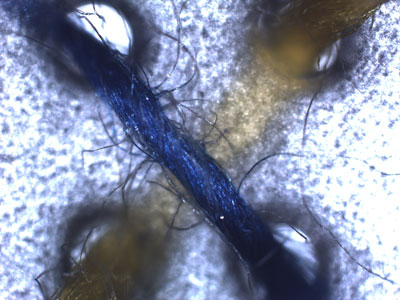| Posted: February 17, 2010 |
Stitching together lab-on-a-chip devices with cotton thread and sewing needles |
|
(Nanowerk News) Scientists in Australia are reporting the first use of ordinary cotton thread and sewing needles to literally stitch together a microfluidic analytical device — microscopic technology that can transport fluids for medical tests and other purposes in a lab-on-a-chip. The chips shrink room-sized diagnostic testing equipment down to the size of a postage stamp, and promise revolutionary applications in medicine, environmental sensing, and other areas. Their study is in ACS Applied Materials & Interfaces ("Thread as a Versatile Material for Low-Cost Microfluidic Diagnostics").
|
 |
| Cotton thread, shown in this close-up image, provides a simple way to transport fluids for low-cost “lab-on-a-chip” tests for detecting disease and other purposes. (Image: Wei Shen)
|
|
Wei Shen and colleagues note that the development of low-cost “lab-on-a-chip” diagnostic tests has become an attractive area of research. Existing devices require etching microscopic channels onto slivers of silicon, glass, ceramics, or metal in a costly, complicated process. The scientists set out to find an alternative, and did so with cotton thread, which wicks fluids along its tiny fibers.
|
|
They stitched thread into paper to form microfluidic sensors capable of detecting and measuring substances released in the urine of patients with several human medical conditions. “The fabrication of thread-based microfluidic devices is simple and relatively low cost because it requires only sewing needles or household sewing machines," the report said. "Our results demonstrate that thread is a suitable material for fabricating microfluidic diagnostic devices for monitoring human health, environment and food safety, especially for the population in less-industrialized areas or remote regions.”
|

